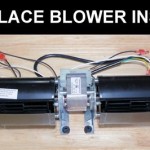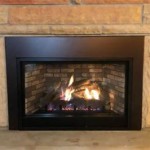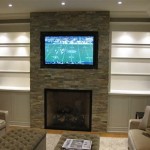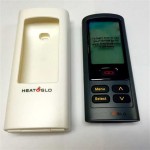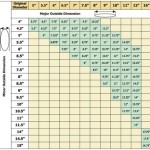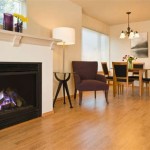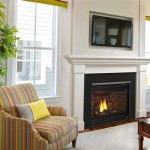Mounting a TV Above a Fireplace and Managing Wires
Mounting a television above a fireplace is a popular aesthetic choice for many homeowners, offering a centralized entertainment focal point within a living space. However, this installation presents unique challenges, particularly regarding cable management and ensuring safe power distribution. Careful planning and execution are critical to achieving a clean, professional-looking result while adhering to safety standards and building codes.
This article addresses the considerations for mounting a television above a fireplace, focusing specifically on the strategies for concealing and managing wiring to create a visually appealing and safe installation. The information presented is intended for individuals with a reasonable understanding of electrical systems and basic home improvement skills. If unsure at any point, consulting a qualified electrician or professional installer is strongly recommended.
Assessing the Suitability of the Fireplace Installation
Before proceeding with the installation, a thorough assessment of the existing fireplace and surrounding wall structure is necessary. Several factors need to be considered, including the type of fireplace, the wall material, and the potential for heat exposure. The type of fireplace, whether gas, electric, or wood-burning, impacts the potential heat output and the placement of the television. Wood-burning fireplaces generate significantly more heat, requiring a greater distance between the fireplace opening and the television screen to prevent damage. Gas fireplaces, while cleaner-burning, still produce heat that must be factored into the placement strategy.
The wall material, whether drywall, brick, or stone, dictates the mounting hardware and techniques required. Drywall is the simplest to work with, but it's crucial to locate wall studs for secure mounting. Brick and stone require specialized drilling equipment and anchors to ensure the television is securely fastened. The structural integrity of the wall to support both the television and the mounting bracket must be confirmed.
Heat is a major concern when mounting a television above a fireplace. Prolonged exposure to excessive heat can damage the television's internal components, shorten its lifespan, and even void the warranty. The temperature above the mantle should be measured during fireplace operation to determine if it exceeds the television manufacturer's recommended operating temperature. If the temperature is too high, options include installing a heat shield above the fireplace, increasing the distance between the fireplace and the television, or reconsidering the mounting location altogether. Some modern fireplaces are designed with specific recesses or features specifically for television installation, mitigating the heat concerns. Review the fireplace manufacturer’s specifications before installation.
Planning for Wiring and Power Connections
Effective wire management is crucial for a clean and professional television installation above a fireplace. Wires left exposed can detract from the aesthetic appeal and create potential safety hazards. The planning phase should encompass identifying the necessary power and signal connections, determining the optimal wire routing path, and selecting the appropriate concealment methods.
The power connection is paramount. Ideally, a dedicated electrical outlet should be installed behind the television. Attempting to run a long extension cord from an existing outlet below the fireplace is generally discouraged due to the potential tripping hazard and fire risk. If an existing outlet is not conveniently located, a qualified electrician should install a new outlet behind the television. This minimizes visible wiring and ensures the television receives a stable and safe power supply. The new outlet should meet all applicable electrical codes.
Signal connections, such as HDMI cables, coaxial cables, and Ethernet cables, also need to be considered. The number and types of connections required will depend on the devices connected to the television, such as cable boxes, gaming consoles, and streaming devices. Pre-planning the connection requirements ensures that all necessary cables are routed behind the wall and available for connection when the television is mounted. Using high-quality HDMI cables is recommended for optimal picture and sound quality, particularly for 4K and HDR content. Consider future-proofing the installation by running extra conduit or additional cables for potential future needs.
Consider the use of a media box or component shelf to house the connected devices. These can be strategically placed to minimize visible wiring and provide a centralized location for all the entertainment components. The media box can be located below the fireplace, in a nearby cabinet, or even remotely, with the signal cables running through the wall to the television.
Concealing Wires: Techniques and Materials
Various techniques and materials are available for concealing wires when mounting a television above a fireplace. The choice of method will depend on the wall type, the accessibility of the wall cavity, and the desired aesthetic.
One common method involves using in-wall rated wiring and cable management systems. These systems typically consist of recessed wall plates that house the power and signal connections, along with flexible conduit or grommets to protect the wires as they run through the wall cavity. In-wall rated wiring is specifically designed to be installed inside walls and is compliant with fire safety codes. This type of wiring is essential for any wiring concealed within the wall.
Fish tape, also known as a wire snake, is an invaluable tool for pulling wires through the wall cavity. It allows for easy maneuvering of the wires around obstructions and ensures that they are routed correctly to the desired location. When using fish tape, it is crucial to exercise caution to avoid damaging existing wiring or plumbing within the wall.
Another option is to use paintable wire molding or raceways. These are plastic or metal channels that are mounted to the surface of the wall and conceal the wires. Wire molding is a good option when accessing the wall cavity is difficult or impractical. It can be painted to match the wall color, making it less noticeable. However, it is generally less aesthetically pleasing than concealing the wires completely within the wall, but this choice is often dictated by the type of wall material.
For brick or stone fireplaces, concealing wires can be more challenging. One approach is to use surface-mounted wire channels that are designed to blend in with the existing material. These channels can be attached to the surface using adhesive or screws. Another option is to create a chase within the brick or stone to house the wiring. This requires specialized tools and skills and should only be performed by experienced professionals. Mortar matching is key when re-filling any chase channel to properly match the existing brick or stone work.
Regardless of the method chosen, it is essential to label all wires clearly before concealing them. This will make it easier to troubleshoot and make changes in the future. Using cable ties or Velcro straps to bundle the wires together can also help keep them organized and prevent them from becoming tangled.
Safety Considerations and Code Compliance
Safety is paramount when mounting a television above a fireplace, particularly when dealing with electricity and wiring. All electrical work must comply with local electrical codes to ensure the safety of the occupants and prevent fire hazards. Understanding the relevant codes and adhering to them is essential.
Hiring a qualified electrician to perform any electrical work is highly recommended. An electrician is trained and experienced in handling electrical systems and can ensure that the installation is done safely and correctly. They will also be familiar with the local electrical codes and can ensure that the installation complies with all applicable regulations.
Using the correct type of wiring and components is also crucial for safety. As mentioned earlier, in-wall rated wiring must be used for any wiring concealed within the wall. This type of wiring is specifically designed to withstand the high temperatures and potential hazards associated with being installed inside walls.
Grounding the television and all connected devices is also essential for preventing electrical shock. Ensure that all electrical outlets are properly grounded and that the television is connected to a grounded outlet. Using a surge protector can also help protect the television and other electronic devices from power surges.
Finally, it is important to regularly inspect the wiring and connections to ensure that they are in good condition. Look for any signs of damage, such as frayed wires or loose connections. If any damage is found, it should be repaired immediately by a qualified electrician.
By carefully planning the installation, using appropriate materials and techniques, and adhering to safety guidelines, homeowners can successfully mount a television above a fireplace and create a visually appealing and safe entertainment space.

Tv Wall Mount Installation With Wire Concealment Over Fireplace

How To Hide Tv Wires Above A Fireplace When You Can T Go Through The Wall Homes I Have Made

How To Hide Tv Wires Above A Fireplace When You Can T Go Through The Wall Homes I Have Made

Hide Cords Of A Tv Mounted Over Fireplace Powerbridge

How To Hide Tv Wires Above A Fireplace When You Can T Go Through The Wall Homes I Have Made

How To Hide Tv Wires Above A Fireplace When You Can T Go Through The Wall Homes I Have Made

How To Mount A Tv Over Brick Fireplace And Hide The Wires Designing Vibes Interior Design Diy Lifestyle

How To Hide Cable Wires When Mounting Tv Over Fireplace Hometalk

How To Hide Tv Wires Above A Fireplace When You Can T Go Through The Wall Homes I Have Made

Hiding Wires For A Tv Above Fireplace Extension Kit Powerbridge Mount Over Mounted
Related Posts

